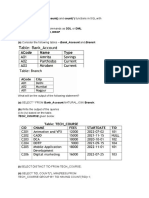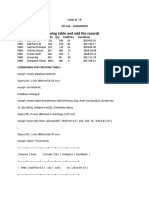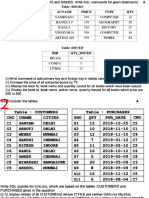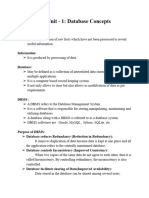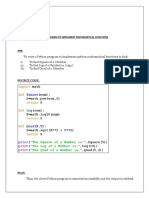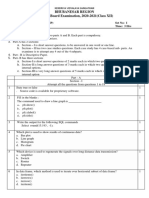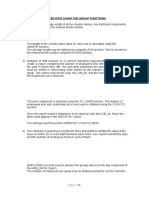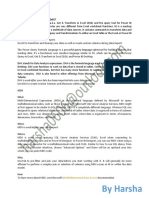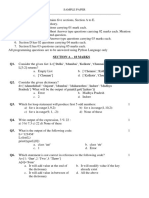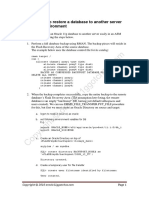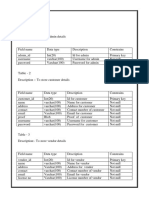0% found this document useful (0 votes)
430 views13 pagesPractical File 2
The document contains questions about SQL queries on sample tables STORE and EMPLOYEE. It asks to write queries to:
1) Create the STORE table, insert records, and display results ordered by sales amount.
2) Join STORE and JOB tables to display employee details with job titles.
3) Filter the EMPLOYEE table to display records matching criteria like bonus amount, sales amount, names containing strings.
4) Perform aggregate functions, date operations and transform case on columns in the EMPLOYEE table.
Uploaded by
ann cherianCopyright
© © All Rights Reserved
We take content rights seriously. If you suspect this is your content, claim it here.
Available Formats
Download as DOCX, PDF, TXT or read online on Scribd
0% found this document useful (0 votes)
430 views13 pagesPractical File 2
The document contains questions about SQL queries on sample tables STORE and EMPLOYEE. It asks to write queries to:
1) Create the STORE table, insert records, and display results ordered by sales amount.
2) Join STORE and JOB tables to display employee details with job titles.
3) Filter the EMPLOYEE table to display records matching criteria like bonus amount, sales amount, names containing strings.
4) Perform aggregate functions, date operations and transform case on columns in the EMPLOYEE table.
Uploaded by
ann cherianCopyright
© © All Rights Reserved
We take content rights seriously. If you suspect this is your content, claim it here.
Available Formats
Download as DOCX, PDF, TXT or read online on Scribd
/ 13

